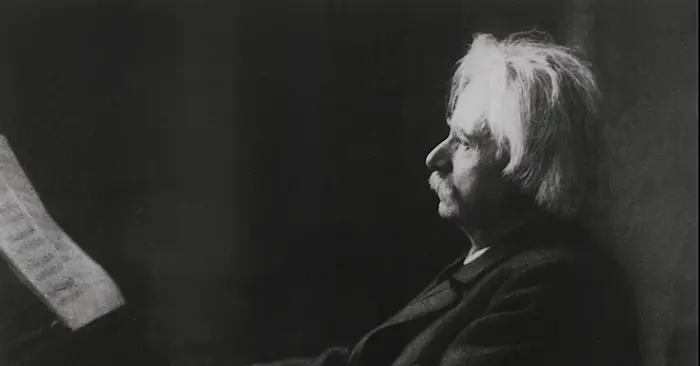Edvard Grieg, one of Norway’s most celebrated composers, created the Holberg Suite to honor the 200th anniversary of the birth of the playwright Ludvig Holberg. This suite, also known as “From Holberg’s Time” (Norwegian: Fra Holbergs tid), is a remarkable work that blends Baroque forms with Romantic sensibilities. It was composed in 1884 and is a testament to Grieg’s ability to evoke the past while imbuing his music with contemporary warmth and emotion. In this article, we will explore the origins, structure, and significance of the Holberg Suite, delving into each movement and examining Grieg’s innovative approach to composition.
I. Origins of the Holberg Suite
Edvard Grieg composed the Holberg Suite to commemorate Ludvig Holberg, a prominent Norwegian-Danish playwright and essayist. Holberg, often referred to as the “Molière of the North,” was a significant figure in Scandinavian literature. Grieg sought to pay tribute to Holberg by creating a suite that reflected the musical styles of Holberg’s time, the early 18th century.
Grieg originally wrote the Holberg Suite for piano, but it was soon transcribed for string orchestra, the version most commonly performed today. The suite consists of five movements, each inspired by Baroque dance forms. Despite its historical inspiration, Grieg’s Holberg Suite is infused with his unique Romantic style, making it a bridge between past and present.
II. Structure of the Holberg Suite
The Holberg Suite is composed of five movements:
Praeludium (Prelude)
Sarabande
Gavotte
Air
Rigaudon
Each movement is distinct, yet together they form a cohesive whole that showcases Grieg’s skillful blending of Baroque and Romantic elements.
Praeludium (Prelude) :A Spirited Beginning
The suite opens with the Praeludium, a lively and energetic movement. It is characterized by rapid, cascading scales and a rhythmic drive that immediately captures the listener’s attention. The Praeludium sets the tone for the entire suite, showcasing Grieg’s ability to create excitement and anticipation. This movement is in ternary form (ABA), with a contrasting middle section that provides a moment of calm before the return of the opening material.
Sarabande: A Graceful Dance
The second movement, the Sarabande, is a stately and elegant dance. It is slower and more reflective than the Praeludium, offering a moment of tranquility. The Sarabande is marked by its graceful melody and rich harmonies, which evoke a sense of nobility and poise. This movement showcases Grieg’s lyrical writing and his ability to create a sense of timeless beauty.
Gavotte: A Lively Interlude
The third movement, the Gavotte, is a lively and upbeat dance. It features a playful and lighthearted melody, accompanied by a rhythmic accompaniment that propels the music forward. The Gavotte is paired with a Musette, a pastoral dance characterized by a drone bass, which adds a rustic charm to the movement. This section contrasts with the Gavotte’s lively character, creating a delightful interplay between the two dances.
Air: A Poignant Reflection
The fourth movement, the Air, is the emotional heart of the suite. It is a slow and lyrical piece that showcases Grieg’s gift for melodic writing. The Air is marked by its expressive melody and rich harmonic texture, creating a sense of introspection and longing. This movement provides a moment of calm and reflection before the suite’s energetic conclusion. The Air’s beauty and emotional depth make it one of the most beloved movements of the Holberg Suite.
Rigaudon: A Joyful Finale
The suite concludes with the Rigaudon, a lively and spirited dance. It features a bold and rhythmic opening theme, followed by a contrasting middle section that is more lyrical and graceful. The Rigaudon is characterized by its buoyant energy and vibrant character, bringing the suite to a joyful and exuberant close. This movement highlights Grieg’s ability to create music that is both technically brilliant and deeply expressive.
III. Significance of the Holberg Suite
The Holberg Suite is significant for several reasons. Firstly, it demonstrates Grieg’s mastery of blending historical forms with his own Romantic style. By drawing on Baroque dance forms, Grieg pays homage to the past while infusing the music with his own unique voice. This combination creates a work that is both timeless and contemporary.
Secondly, the Holberg Suite is a testament to Grieg’s ability to write for both piano and orchestra. The original piano version of the suite is a brilliant showcase of Grieg’s pianistic skills, while the orchestral version highlights his talent for orchestration. Each version offers a different perspective on the music, allowing listeners to appreciate the suite’s richness and versatility.
Finally, the Holberg Suite is a beloved work in the classical repertoire. It is frequently performed by string orchestras around the world and is a favorite among musicians and audiences alike. The suite’s charm, elegance, and emotional depth make it a standout piece in Grieg’s oeuvre and a testament to his enduring legacy as a composer.
See Also: What Makes Classical Music Complicated?
IV. Conclusion
Edvard Grieg’s Holberg Suite is a masterful blend of Baroque and Romantic elements, creating a work that is both historically informed and deeply personal. Through its five movements, the suite captures a range of emotions, from the spirited energy of the Praeludium to the poignant reflection of the Air. Grieg’s innovative approach to composition, his skillful orchestration, and his ability to evoke the past while remaining true to his own voice make the Holberg Suite a timeless masterpiece. This suite continues to captivate audiences with its beauty, elegance, and emotional depth, ensuring its place as one of Grieg’s most cherished works.

